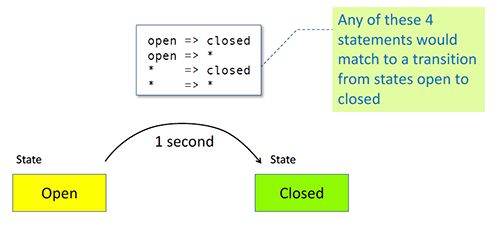Angular Animations
컴포넌트와 HTML 요소에 대해 애니메이션을 줄 수 있습니다. 애니메이션을 주어 좀 더 살아있는듯(?)한 웹 페이지를 만들어 낼 수 있습니다.
필요한 모듈 임포트하기
BrowserAnimationsModule
// app.module.ts
// ...
import { BrowserAnimationsModule } from '@angular/platform-browser/animations'
@NgModule({
imports: [
//...
BrowserAnimationsModule,
],
})
export class AppModule {}애니메이션 함수들
- trigger
- animate
- group
- sequence
- style
- state
- keyframes
- transition
- animation
- animateChild
- useAnimation
- query
- stagger
fadePop 애니메이션 만들기
// foo.component.ts
const popAnimation = trigger('pop', [
transition(':enter', [
style({
opacity: 0.6,
transform: 'scale(0.8)',
}),
animate('200ms cubic-bezier(0.165, 0.84, 0.44, 1)', style({
transform: 'scale(1)',
opacity: 1,
}))
]),
transition(':leave', [
style({
opacity: 1,
}),
animate('50ms', style({
opacity: 0,
})),
])
]);
@Component({
// ...
template: '<div @pop>...</div>',
animations: [popAnimation]
})@pop 애니메이션을 사용할 엘리먼트에 지정을 해주면, 특정 이벤트가 발생할 때 애니메이션이 실행된다.
튜토리얼 보며 느낌 알기
trigger('openClose', [
state('open', style({ ... })),
state('closed', style({ ... })),
transition('open => closed', [ ... ]),
transition('closed => open', [ ... ]),
])openClose 라는 애니메이션이며 open, closed 라는 두 가지 상태값을 갖는다. 그리고 transition() 의 첫번째 파라미터로 '어떠한 상태에서 어떠한 상태로 이동하는지' 에 대하여 기술해준다. 위의 경우에는 'open 상태에서 closed 상태', 'closed 상태에서 open상태' 로가는 트랜지션을 두개 갖는다.
공통적용
open 에서 closed 로 진입 진출의 애니메이션이 같다면 <=> 를 사용하여 대체할 수 있다.
transition('open <=> closed', [ ... ])상태값
- void
- wildcard(
*) - custom
void state
DOM 에 배치하기 전이나 제거되는 상태이며 페이지 진입 진출 시 유용하다.
trigger('flyInOut', [
transition('void => *', [
style({ transform: 'translateX(-100%)' }),
animate(100),
]),
transition('* => void', [
animate(100, style({ transform: 'translateX(100%)' })),
]),
])렌더링될 때 왼쪽에서 오른쪽으로, 렌더링 해제될 때 다시 오른쪽으로 이동하게된다.
DOM 배치 전 | 현재 화면 | DOM 제거
void => *
* => void진입진출은 많이 써 앵귤러에서 별칭(alias)을 제공한다.
transition(':enter', [ ... ]) // void => * === :enter
transition(':leave', [ ... ]) // * => void === :leavewildcard
앵귤러 애니메이션에는 wildcard 라는 것이 있는데, 아무 상태를 나타낸다. 다음을 보면 좀 더 이해가 빠르다.

open => closed: open 에서 closed 로 갈 때open => *: open 에서 아무 상태로 갈 때* => closed: 아무 상태에서 closed 로 갈 때* => *: 아무상태에서 아무상태로 갈 때
boolean values in transition
Boolean 값으로 상태를 지정할 수 있다.
animations: [
trigger('openClose', [
state('true', style({ ... })),
state('false', style({ ... })),
transition('false <=> true', animate( ... ))
])
]Keyframes
angular 애니메이션에서 keyframes 를 사용하면 여러단계(multiple steps)를 갖는 애니메이션을 만들 수 있다.

transition('* => active', [
animate('2s', keyframes([
style({ ... }),
style({ ... }),
style({ ... }),
]))
])void 상태에서 active 상태로 갈 때 해당 keyframes 를 적용시킨다.